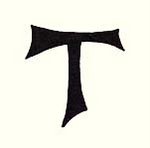 The AFCU 2010 Symposium could not have a more timely unifying theme. The theme is: Educating for the Care of Creation: Contemporary Verses for the Canticle of the Creatures. For the last 50 days Americans and the world have been watching the consequences of our thirst for cheap oil unfold in the Gulf of Mexico. The scenes of animals struggling to live, too tired to even be frightened by humans, is heartbreaking. All of a sudden people who minimize the destruction of ecosystems, who question global warming, are paying attention. That is because it is in our backyard and because it reflects a suffering that cannot be ignored.
The AFCU 2010 Symposium could not have a more timely unifying theme. The theme is: Educating for the Care of Creation: Contemporary Verses for the Canticle of the Creatures. For the last 50 days Americans and the world have been watching the consequences of our thirst for cheap oil unfold in the Gulf of Mexico. The scenes of animals struggling to live, too tired to even be frightened by humans, is heartbreaking. All of a sudden people who minimize the destruction of ecosystems, who question global warming, are paying attention. That is because it is in our backyard and because it reflects a suffering that cannot be ignored.CNN BP wildlife cleanup
However, the most current example of our callowness toward creation is not the exception. All around us the earth is crying out. The Amazon River Delta is losing trees, soil, and diversity every day at a staggering rate. Each day we are warned of yet another species of animal or plant life that faces an uncertain future. Nations are preparing for a world in which the wars and security concerns are focused on food sources, water and the large migrations of peoples. All of this due to dramatic changes in the climate.
Deserts are expanding, glaciers are melting, oceans are rising and islands are disappearing. This symposium calls us back to caring for creation, of recognizing our relationship/s with creation. It is the right time for this symposium.
Perhaps the BP oil spill has energized us because we are tired of one region of our nation suffering so much. Perhaps it is because it will affect so many different types of industries and ways of life. Perhaps it is because the death of so many birds, marine mammals and turtles demand a response. Perhaps it is because “extinction” and “forever” all of a sudden seem comprehensible.
Global Warming is affecting animals and habitats
For four days 22 Franciscan colleges and universities will meet at the campus of the University of Saint Francis, Fort Wayne. We will explore “Caring for Creation” from the sciences, the arts, theology and the humanities. We will explore our obligations to our fellow creatures as the benefactors of a generous God. We will not focus on Francis of the birdbaths. We will focus on Francis in relationship. It is only by recognizing our relationship with God and with all of creation that we may begin the very difficult and important task of caring for a hurting planet that we have hurt.
St. Francis of Assisi/World Animal Day by EVOLVE! Campaigns
So, let us begin four days of talking, listening and laughing on the shores of Mirror Lake. Let us find time to be alone, to give thanks, to assess our own relationship with the web of life. Et us enjoy the campus, the food, the fellowship and the city of Fort Wayne. Then let us go home to our respective schools and communities and model what it looks like to be brothers and sisters with creation.
Peace and all Good,
Carl












































